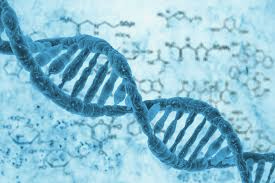With all the talk about elections, race identity has become a thing. White people are clamoring to stay on top, everyone else is frantic, and with good reason. Recently, a dear friend had her DNA tested, the kind of test that gives you percentages of your heritage. Hers was a veritable smorgasbord of ethnicities. She looks what people like to call “exotic,” beautiful and not quite white. Most Americans classify themselves by family history, even if that history has been altered by name changes and inconvenient ancestors eliminated by omission. Some of us are unknowns, unless we choose to look.
I am adopted, this is the earliest fact of my life. Born in San Antonio, I was given to my parents when I was six days old, in a dress my mom brought for my birth mother to dress me in. Aside from the heartbreaking aspect of my birth mother dressing me to give me away, I wondered. Who am I, really? When I got curious, about fifteen years ago, I discovered that my birth mother was/is Hispanic. Big deal. I was always the darkest white person in every class photo, anyway. How many of us know what ethnicity we truly are? Women have obfuscated and dodged paternity questions since forever, due to the murky politics of sex, rape and love. But now, as American citizens are busily sorting and screaming about exclusion and inclusion and whose lives matter and lets get rid of illegals, this self-identification thing grows complicated.
This does go back to Lyme disease, because everything in my life now returns me to Lyme, and why I got so sick. Well, it turns out one’s reaction to Lyme is influenced by genetics and age (of COURSE age, as in, the older you are the sicker you can get). Cytokines, which are the body’s most important immune signaling molecules, decrease with age. Strike one for me. I guess I should be glad I’m not older. There is also a certain genetic variation that makes some people sicker than others. Did I get that, too? Like everything about Lyme, it depends. It depends on what bugs were in your tick bite. It depends on when you started treatment. It depends on whether it is the right treatment. It depends on what tests you took and how accurate they were. Maybe my genetic makeup made me get sicker than others. I’ve always viewed my adoption as a sort of talisman against sickness. As I wrote “unknown, adopted” across the top of the family health section in every medical intake record I’ve filled out, I felt a smug sense of destiny—if I don’t know it won’t happen. Hey, I know it’s magical thinking but it’s mine, so there.
I was never one of those adoptees who had a burning desire to know my birth parents. Until I had Katie. At some point, I wanted to know why she loved animals, or where her artistic streak came from (it certainly wasn’t from me or her father). I ordered the adoption papers the Methodist Mission Home in San Antonio would release, the pertinent facts blacked out like a classified war document. I searched for three years. I registered with adoption search agencies and tried to figure out what I could from the meager information I had. An “adoption angel” saw my information and sent me the link that opened the doors to my heritage.
My birth father was white. In fact, he was her Journalism teacher. In high school. That’s right, my birth mom got pregnant in February of her senior year with her 32-year-old teacher. It’s hard to put myself in her shoes, much less in the times (1958, McAllen, Texas). I thought about this even more when I read the reviews of “Loving“, a new movie about the Supreme Court decision to strike down interracial marriage laws. Would my birth mom have been ostracized for having a half-white baby? Would my birth father not have married her because she wasn’t white? This puts a whole new spin on why she put me up for adoption (other than the obvious). She was number five of eleven children. Her family had lived in the valley since the 1860s. I don’t know why I like this fact, other than it makes me really, really Texan. I gathered what details I could about her life after me. I found some pictures of both her and my birth father. I look like both of them, there’s no doubt at all in my mind that he is my birth father. It was a validation, too. He taught journalism, her family owned a restaurant. He played musical instruments, she went on to study journalism in college. Somewhere out of those ten birth aunts and uncles, I bet there are artists and animal lovers.

I was surprised how comforting it was to see pictures of my birth parents. I still don’t know their medical histories, but the days of magical thinking are over. I have genetic flaws, like every human on earth. A genetic anomaly might be what made me get so sick with Lyme. I will still tell people I am half-Hispanic when the subject comes up, and it comes up often. Think about it. Even the most liberal-thinking people make classifications and inquiries while getting to know someone. Where are you from? What kind of name is XYZ? I wonder now, will some people look at me differently if they know my background. There’s a powerful video making the rounds, a room full of people opening their DNA tests together. The surprises are evident, the video’s obvious purpose to shatter the notion that anyone is pure anything. Maybe we should all take a DNA test. Level the playing field a bit. Meanwhile, I have to get back to fighting Lyme, genetic destiny be damned.


Leave a Reply